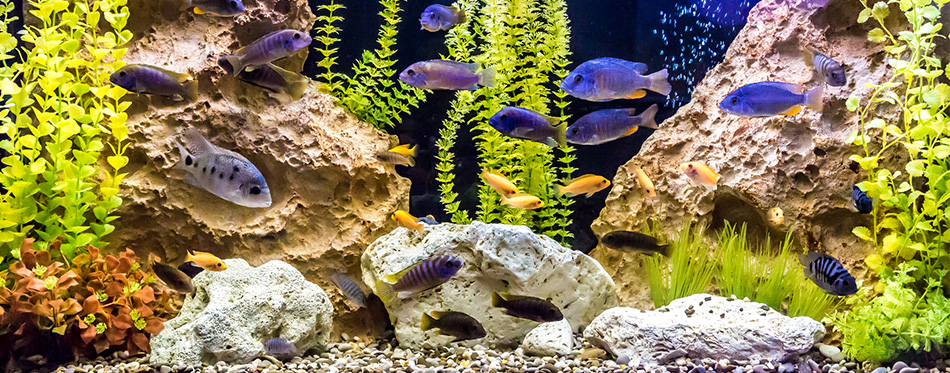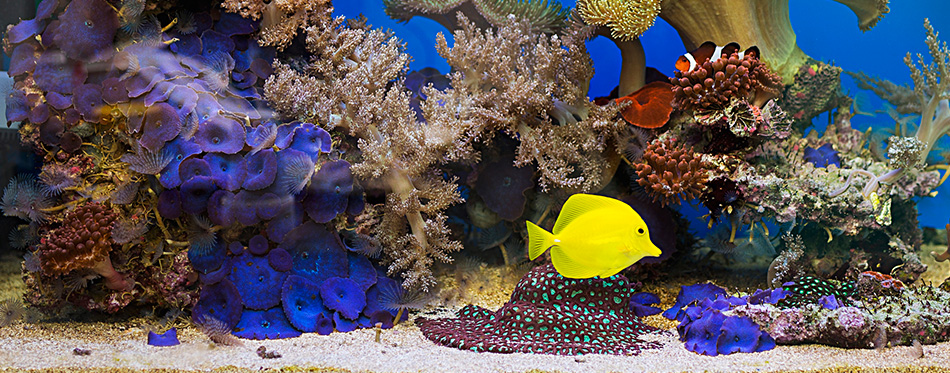As an aquarium owner, you are responsible for maintaining the chemical balance of the environment where your aquatic creatures live. You need to get this right to make sure that your aquarium is a comfortable and safe place to live. This is true for freshwater and saltwater aquariums.
Most people are familiar with issues relating to ammonia levels and nitrites rising too high. However, you may not be so familiar with potential problems associated with nitrates. It is important that nitrate levels are kept within a safe range and any variations need to be dealt with quickly. Here is a brief guide on what you need to know about nitrate levels in your aquarium.

Nitrate and Fish – the Basics
Aquariums are closed habitats. Whatever you put in, you need to take back out again or it will build up and poison that ecosystem. You put in fish, plants and food. This results in left over food, fish feces (poop) and some dead plants or at least dead parts of plants. All of these contain ammonia which is released into the water.
The ammonia will eventually be pumped through the filter where there are useful bacterial colonies which turn ammonia into nitrite and will then break it down into nitrates. If this is allowed to build up, it will eventually cause some issues for your fish.
High levels of nitrate cause stress to fish and this interferes with their ability to fight off disease so they are more likely to get sick. They may also have problems producing young and if any young fish are produced into an environment with high nitrate levels, they may have impaired development and growth. The oxygen levels within the tank are also likely to be affected and this causes additional stress.
If the nitrate concentration becomes very high, the fish may become lethargic and could develop red sores on their surface. Any new fish that are added to this high-nitrate environment could die suddenly because they will have had no time to acclimate to the high concentrations.
How to Monitor Nitrate Levels
You can’t determine nitrate levels by looking at the aquarium, it has no odor and has no color. If you are experiencing an algal bloom in your aquarium, it can indicate that nitrates are too high but not always.
The most sensible option is to buy a kit that is designed to accurately measure nitrate levels. You may use dip sticks or a more sophisticated testing kit. It usually involves getting a clean test tube with a cap and adding just 5 ml of the aquarium water. Then, you add a special chemical to the water, place the cap back on and shake it gently to mix it up. Then you may need to add a second chemical and mix it again for a longer period of time. You wait for a specified period and watch for a color change. You will be provided with a color card and you match the color of your test liquid to the chart. There will be one reading for freshwater and another for saltwater.
Now you need to know how to interpret the numbers! Nitrate levels of anything over 100 ppm will definitely hurt your fish but problems start to occur at much lower levels than that. Ideally, the levels should not be higher than 5 to 10 ppm. If you are getting a reading of 20 to 50 ppm, you need to start treating the water. The problem is that nitrate levels build up and they will soon reach levels that will cause a problem.
What You Can Do About High Nitrate Levels
Identifying high nitrate levels is just the start of the process. Now you need to do something about it! The first step in this process is identifying what has caused it in the first place and taking action to stop it happening. Here are the main culprits but anything that increases the accumulation of waste will cause problems in both freshwater and saltwater tanks.
- Overfeeding: This is the primary cause of high nitrate levels because overfed fish produce more waste and uneaten will rot in the tank producing even more nitrate.
- Overstocking: The more fish you have, the more waste will be produced and nitrate levels will inevitably be high. As a rule of thumb, think about how many fish you could fit into the aquarium and then halve it! Understocking is the best way to control nitrate levels.
- Dirty filters: Filters are there to remove waste, food and detritus from the water in the aquarium but it does not disappear! It sits in the filters and contributes towards the nitrate load until you remove it.
- Decaying plants: Dead plant leaves rot down in the water and produce nitrates.
There are some basic maintenance steps that you can take. Here are the main ones.
- Daily maintenance tasks: Observe your fish during feeding. Do they finish all the food within a couple of minutes? If they don’t, you are feeding them too much. Try giving them several small meals instead of one big one. Also, remove any waste food, dead creatures and dead or dying plants. Head over to our review of automatic fish feeders for more options.
- Weekly maintenance tasks: Change the water at least weekly but more often is better. Change half of the volume to make sure any waste will be diluted. Be careful about your tap water – it can contain high nitrate levels. You may have to use purified water produced by a reverse-osmosis unit. This is not possible in a saltwater aquarium. Check the filters but, if you are relying on bacterial colonies in a mechanical filter, only replace part of the medium. If it is very dirty, cleaning it gently in a bucket of tank water should maintain the biofilter.
- Introduce plants: Plants use up ammonia, nitrite and nitrate and so help to control the levels. In a saltwater sump system, you will want macroalgae but some of it will need to be removed weekly. Mangrove plants are exceptionally good at removing nitrates. They have roots underwater.
Specific Measures for a Freshwater Aquarium
If you are the owner of a freshwater aquarium, the first step you should take to reduce nitrate levels is a partial water change. Do not change more than 20% because this will be too much of a shock for the fish. Your aim is to gradually reduce the nitrates and therefore avoid stress for the fish.
Keep an eye on your stocking levels and do not overfeed your fish. Also, clean out any dead plants. You may find a nitrate-absorbing filter useful. It will remove nitrate particles but is not a replacement for partial water changes. You need to keep on doing this once a week. Adding plants will also help a lot.
In emergency situations, you can add chemicals to your tank which will quickly reduce the nitrate concentration. These, however, are not a long-term solution. You must also take preventative measures to stop the nitrate levels rising.

Specific Measures for a Saltwater Aquarium
Saltwater tanks are very specialized habitats. Sadly, they can get levels of nitrate just like a freshwater tank. This is caused by the same sources, namely rotting food, fish waste and decaying plants. The levels of nitrate in a saltwater tank are critical and must be as low as you can get them. You should be aiming for levels of below 40 ppm. In a reef tank where you are housing living invertebrates, it must not rise above 5 ppm.
It is wise to invest in a testing kit and you must use an indicator card that is specifically for saltwater. A freshwater testing kit will not work. The remedy for a freshwater tank, namely a 50 % water change, may not be possible for a saltwater tank. However, many saltwater aquarium owners do make partial water changes. Something around 20 % can be highly effective but always use filtered water to make sure that it contains no nitrates.
Other owners like to use a nitrate-reducing system within the aquarium. Rock and deep sand beds are highly effective. However, management is the key. Reef tanks, in particular, should be very lightly stocked and feeding should be very light. Overstocking will result in too much waste production. Frequent smaller feeds are better than one big one. If you are using frozen food, use a strainer so that you do not drip juice into the tank.
Once again, you can resort to quick chemical treatments which are effective in the short term. However, these do not replace the preventative actions that are so important.
You may also like our article on Aquarium Heaters.
The Bottom Line
The key message about fish tanks and nitrate levels is that prevention is always better than cure. By watching your stocking and feeding regimen, putting plants in place and keeping an eye on your filters, this is a problem that you can keep under control.

